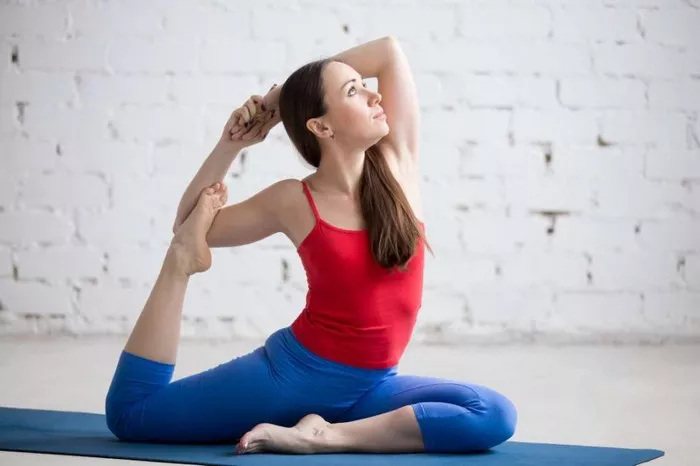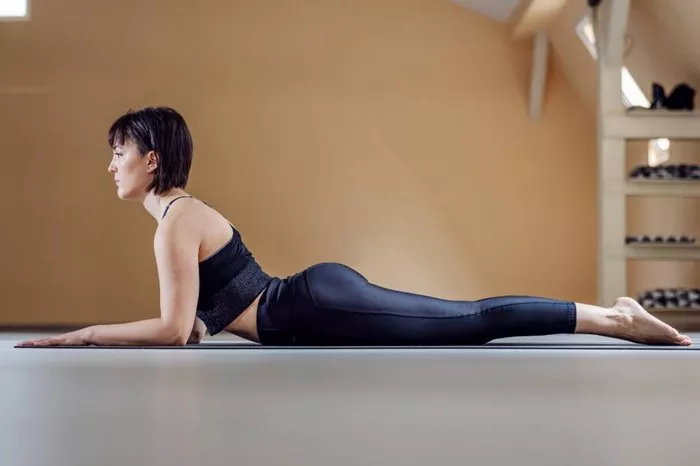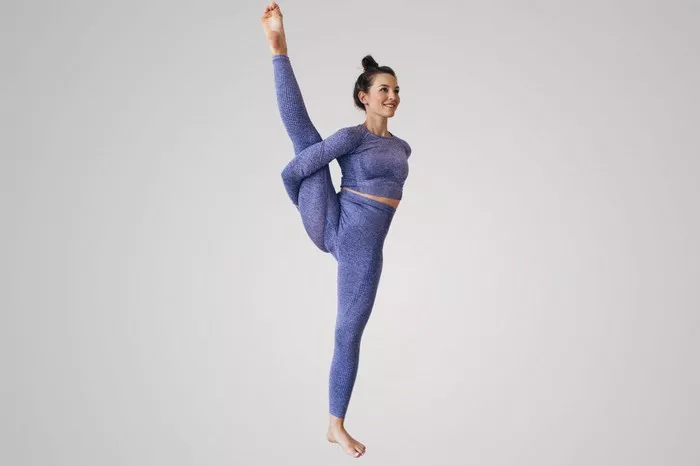Yoga is an ancient practice that combines physical postures, breathing exercises, and meditation to foster physical, mental, and emotional well-being. While yoga includes thousands of asanas (poses) ranging from simple to advanced, newcomers often wonder: What is the easiest yoga pose to learn?
In this article, we’ll explore some of the simplest yet foundational yoga poses, with a spotlight on the very first one I recommend to nearly every beginner: Mountain Pose (Tadasana). We’ll also delve into why Mountain Pose is often considered the easiest yoga pose to start with, how it impacts the body and mind, and some beginner-friendly variations to make it accessible to everyone. After that, I’ll outline several other simple, accessible poses that build upon the foundational benefits of Mountain Pose.
Why Start with Easy Yoga Poses?
For beginners, choosing easy yoga poses can provide several key benefits:
Developing Body Awareness: Simple poses encourage mindfulness of posture, breathing, and alignment.
Building Confidence: Starting with accessible poses builds self-assurance, making yoga less intimidating.
Improving Flexibility and Balance Gradually: Beginners’ muscles and joints need time to adapt to stretching and holding poses.
Avoiding Injury: Mastering basic postures can prevent strain or injury by allowing muscles, joints, and tendons to acclimate.
Easy poses provide the building blocks for more complex movements, making a beginner’s yoga practice safe, approachable, and rewarding.
The Easiest Yoga Pose: Mountain Pose (Tadasana)
Mountain Pose, or Tadasana, is the foundation of nearly all standing yoga postures and is arguably the easiest yoga pose to learn. Despite its simplicity, Tadasana’s benefits are profound, offering alignment, balance, and grounding in a single pose.
How to Do Mountain Pose (Tadasana)
Stand with Your Feet Together: Stand tall with feet hip-width apart, or bring the toes to touch with a slight gap between the heels.
Engage Your Muscles: Gently engage your thighs, tuck your tailbone slightly, and draw your belly button toward your spine to engage your core.
Roll Your Shoulders Back: Lift your chest slightly while rolling your shoulders back and down, allowing your arms to rest at your sides.
Find Your Balance: Distribute your weight evenly across both feet. Feel the stability of the ground beneath you, rooting down with each toe.
Breathe Mindfully: Take slow, steady breaths. On each inhale, feel your spine lengthen; on each exhale, feel grounded.
While simple, Tadasana can immediately start to build alignment and improve posture, helping you feel taller and more balanced.
Benefits of Mountain Pose
Improves Posture: Tadasana encourages proper alignment from head to toe, making it a great remedy for slouched postures.
Strengthens Core Muscles: Standing tall with slight abdominal engagement activates your core muscles, supporting a strong back and stable spine.
Promotes Mindfulness: Mountain Pose fosters a sense of grounding and connection to the earth, helping beginners tune into their body and breath.
Enhances Focus: This simple pose requires awareness, which can improve concentration and mindfulness.
Tadasana might not look as impressive as some advanced postures, but the benefits it offers are foundational and crucial for building a safe and effective yoga practice.
Other Beginner-Friendly Yoga Poses
1. Child’s Pose (Balasana)
Child’s Pose is a restful posture that gently stretches the hips, thighs, and spine. It’s often used as a resting pose during yoga classes, but it also stands alone as a gentle way to relax and stretch the body.
How to Do Child’s Pose
- Start on your hands and knees in a tabletop position.
- Bring your big toes together and spread your knees wide apart.
- Sit your hips back toward your heels, extending your arms forward and bringing your forehead to the mat.
- Take slow, deep breaths, letting your belly relax between your thighs.
Benefits of Child’s Pose
Relieves Lower Back Tension: The gentle stretch releases tension from the lower back and relieves stress.
Opens the Hips: The extended position of the hips helps release tightness in the hip joints.
Calms the Mind: This pose encourages introspection, calming the mind and body, making it a perfect rest posture for beginners.
2. Cat-Cow Stretch (Marjaryasana-Bitilasana)
Cat-Cow Stretch is a gentle, flowing sequence that warms up the spine, improves flexibility, and helps you connect movement with breath.
How to Do Cat-Cow Stretch
- Start in a tabletop position with wrists aligned under shoulders and knees under hips.
- On an inhale, lift your head, drop your belly, and arch your back (Cow Pose).
- On an exhale, round your spine, tuck your chin toward your chest, and draw your belly button toward your spine (Cat Pose).
- Repeat for several breaths, flowing smoothly between Cat and Cow.
Benefits of Cat-Cow Stretch
Increases Spinal Flexibility: This gentle movement loosens and warms up the spine.
Improves Breath Control: Linking movement with breath improves breathing awareness.
Eases Back Pain: The motion helps alleviate tension in the back, making it a great stretch for people with back stiffness.
3. Downward-Facing Dog (Adho Mukha Svanasana)
Downward-Facing Dog is one of the most well-known yoga poses. It stretches the hamstrings, calves, and shoulders while strengthening the arms and core.
How to Do Downward-Facing Dog
- Begin in a tabletop position with hands slightly ahead of your shoulders and fingers spread wide.
- Tuck your toes, lift your knees, and straighten your legs as you lift your hips up and back.
- Press your hands into the mat and distribute weight evenly, keeping a slight bend in the knees if needed.
Benefits of Downward-Facing Dog
Strengthens Arms and Shoulders: Supporting body weight in this pose builds upper body strength.
Stretches Hamstrings and Calves: The extended leg position helps lengthen the backs of the legs.
Improves Circulation: The inversion brings blood flow to the head, helping with mental clarity and focus.
4. Cobra Pose (Bhujangasana)
Cobra Pose is a gentle backbend that opens the chest and strengthens the spine. It’s an excellent posture for beginners working on building core strength.
How to Do Cobra Pose
- Lie face down on the mat with palms under your shoulders, elbows close to your body.
- Press into your hands and lift your chest, engaging your back muscles.
- Keep a slight bend in your elbows, and draw your shoulders away from your ears.
Benefits of Cobra Pose
Strengthens the Spine: Lifting the chest engages the spinal muscles.
Opens the Chest: This pose counteracts rounded shoulders, often caused by sitting or desk work.
Increases Flexibility: Gently bending backward helps increase flexibility in the upper spine.
5. Legs Up the Wall Pose (Viparita Karani)
Legs Up the Wall Pose is a restorative pose that promotes relaxation, reduces swelling in the legs, and is ideal for beginners who want to wind down.
How to Do Legs Up the Wall Pose
- Sit close to a wall and lie on your back, lifting your legs up against the wall.
- Scoot closer to the wall until your hips are comfortable and legs can relax upward.
- Rest your arms by your sides, palms facing up, and close your eyes.
Benefits of Legs Up the Wall Pose
Reduces Swelling and Fatigue in the Legs: Elevating the legs can relieve tired legs.
Promotes Relaxation: This position activates the body’s relaxation response, calming the nervous system.
Eases Lower Back Pain: The gentle position can relieve pressure on the lower back.
6. Corpse Pose (Savasana)
Corpse Pose is often the final relaxation pose in yoga classes, designed to relax the body and mind completely. While it might seem like simply lying down, there’s more to Savasana than meets the eye.
How to Do Corpse Pose
- Lie flat on your back with legs extended and arms at your sides, palms facing up.
- Close your eyes, relax every muscle, and focus on deep, slow breathing.
- Allow each part of your body to release tension, starting from your toes up to your head.
Benefits of Corpse Pose
Promotes Deep Relaxation: Savasana allows the body to integrate the benefits of the yoga practice.
Reduces Stress: Focusing on the breath in Savasana can calm the nervous system.
Improves Body Awareness: Staying present and relaxed increases mindfulness and body awareness.
Building a Simple Beginner Routine
For those new to yoga, a practice incorporating Tadasana and a few of the poses above creates a balanced, gentle flow that promotes flexibility, strength, and calm. Here’s a suggested beginner sequence:
Mountain Pose (Tadasana) – 1-2 minutes, focusing on alignment and breath.
Cat-Cow Stretch (Marjaryasana-Bitilasana) – 5-10 breaths, flowing with each inhale and exhale.
Downward-Facing Dog (Adho Mukha Svanasana) – 5 breaths, keeping knees slightly bent if needed.
Child’s Pose (Balasana) – Rest for 1-2 minutes.
Cobra Pose (Bhujangasana) – 3 breaths, gently lifting with each inhale.
Legs Up the Wall Pose (Viparita Karani) – 2-5 minutes.
Corpse Pose (Savasana) – 5-10 minutes, allowing full relaxation.
Practicing these poses regularly can improve posture, flexibility, and body awareness, while gently building strength and relieving stress.
Conclusion
The easiest yoga poses, especially Mountain Pose (Tadasana), are ideal starting points for beginners, providing a foundation in alignment, breath, and mindfulness that will support a lifetime of practice. By building a consistent, gentle practice with these poses, beginners can foster greater well-being and start their yoga journey with confidence. Each pose offers unique benefits, so exploring them with an open mind will yield lasting physical and mental rewards.
Related Topics:























